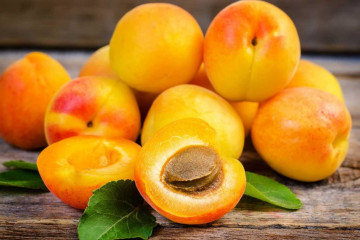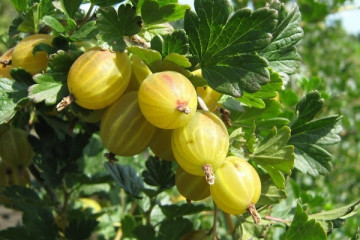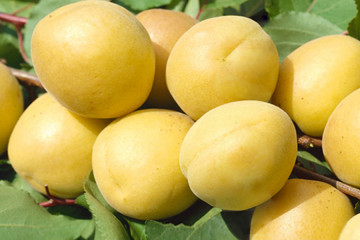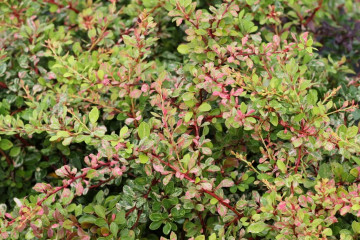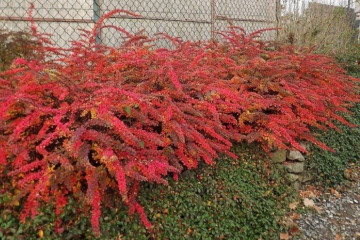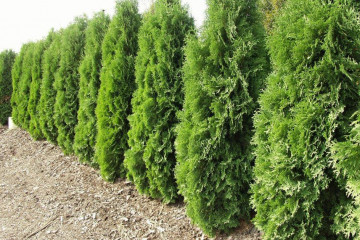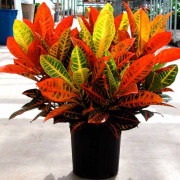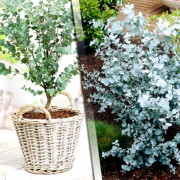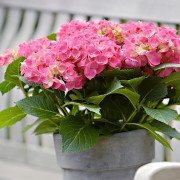Pear Bergamot: description of the variety, is it really citrus
Content:
Perhaps every experienced gardener, if not seen the bergamot pear variety, then at least heard about it. Indeed, the variety is very successful, and therefore in demand all over the world. And Russia is by no means an exception. Therefore, it will be very useful to learn more about him.
Bergamot is a pear or citrus
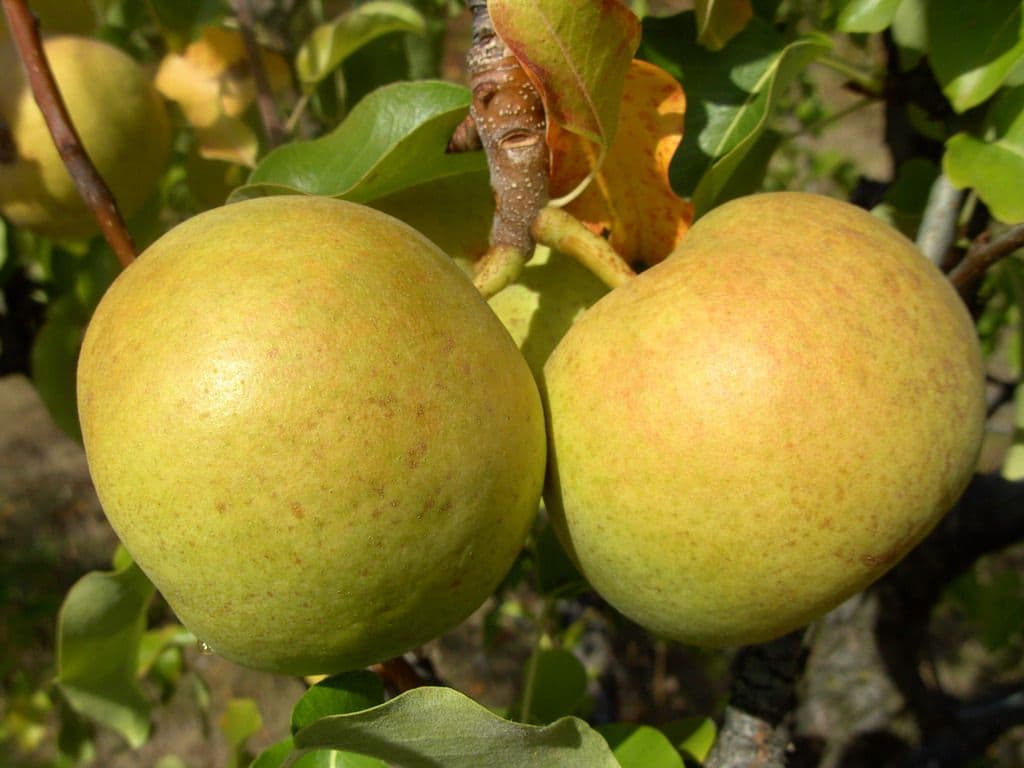
Popular variety all over the world
Before talking about the variety, it is worthwhile to figure out - what is bergamot: citrus, pear, or even an herb? In fact, all three options are correct. There is such a herb (tea is made from it), a plant of the Citrus family, vaguely similar to lemon (in fact, the full name is orange-bergamot) and, of course, a pear variety, varieties of which are grown in many gardens.
Pear Bergamot: description and characteristics of the variety
First of all, it is worth learning more about the variety and its characteristics in order to decide whether it is suitable for a particular gardener.
Tree height
It should be noted right away that bergamot is a tall pear, and therefore needs regular pruning. Otherwise, the branches will break from the fruits even with a slight wind, and it will not be easy to get to them.
Fruit sizes
In general, there are many varieties of bergamot and each fruit has a certain size - the average weight is about 120-160 grams.
An interesting feature of them, which allows you to combine a number of varieties into one variety, is the shape - they all have a slightly flattened shape. The color can be different - from greenish-yellow to yellow-red.
Pear Bergamot: varieties of varieties
Of course, every gardener who decides to grow this valuable crop on his site will find it useful to learn about some of the varieties in order to choose the most suitable option.
- Volzhsky - this variety is characterized by a significant keeping quality of fruits - over a month. Flowering begins in late May and is harvested in early to mid September. Most of the skin is green, but the sides may be ruddy.
- Muscat is one of the largest varieties with a height of up to 8 meters and a crown width of up to 12. At the same time, the fruits are small - up to 100 grams. It blooms early, so harvesting begins at the end of July. From an adult, strong tree, up to 300 kg of fruit can be harvested.
- Autumn - trees have a pyramidal crown. They bloom in late May, ripen by mid-September. With a high yield and excellent taste, this variety is stored, alas, for a very short time. In addition, he needs other pollinating trees to help him.
- Moskovsky - among other varieties, they are distinguished by leaves that have jagged edges at the ends. Fruits are round, yellowish-green, with dense, juicy pulp. But they are stored for a very short time - no more than a crescent.
- In memory of Prince Trubetskoy - a variety with very large fruits - up to 190 grams. The color is yellow-green. The pulp is juicy, has an average density. Under the right conditions, they can be stored for up to six months, for which they are highly valued.
- Bergamot Novik - a variety bred by Michurin personally, reaches a height of 15 meters. Flowering in May, medium-sized fruits. It is not stored for long, but the yields are high, as well as the frost resistance of the plant.
- Bergamot of Dagestan is a relatively new hybrid with high frost resistance. Leaves are deep green, oval and smooth. Large fruits with a pronounced sour taste.
- Rossoshansky - this variety is characterized by a reverse pyramidal crown. The yield is low, and the size of the fruits is small. But the taste is excellent - the pulp is loose, juicy and sweet. In addition, the variety is almost not susceptible to disease.
As the reader could see, Bergamot is a fairly diverse pear. And among the varieties, everyone will choose the right one for him.
Landing

Not to be confused with citrus bergamot
First of all, a hole is dug - about 50-55 cm deep and at least 80 in diameter. It is filled with a suitable substrate - usually peat, humus and ash are mixed. On poor soils, you can also add some superphosphate.
A seedling is lowered into the prepared hole - it is important to carefully straighten the roots. After that, the roots are covered with earth, which is slightly rammed. It remains only to dig in a peg next to it so that the pear grows evenly and does not tilt from the strong wind.
Watering and feeding
In general, the variety perfectly resists drought. It especially needs watering only in the first few years after planting. If there is no rain, then watering should be done at least once every 3-4 weeks, spending 20-30 liters of water for each seedling. It is important that the soil is saturated to a great depth, otherwise the roots will not receive enough moisture.
In the spring, fertilizing with nitrogen fertilizers is carried out. In the autumn period, preference is given to phosphorus supplements. And shortly before flowering, potash fertilizers are introduced into the soil to increase yields.
Pruning rules

There are also elongated fruits
Pruning is done in the spring, when the air temperature has risen to +5 degrees, but the buds have not yet begun to swell. It is important to form a beautiful crown here - it should not be too loose.
Therefore, the outer branches are trimmed, and those going inward are completely cut. As a result, the crown should get a cupped shape.
Harvesting
Most varieties are harvested in August-September. At the same time, it is important that they do not receive damage - such begin to rot quickly, infecting the fruits nearest to them.
Storage periods vary significantly - from a week to six months. But in any case, you need to create optimal conditions - a temperature of about + 2 ... + 5 degrees with a fairly high humidity.
Diseases and pests
The most common diseases are powdery mildew and scab. The first can be fought by spraying the leaves with a solution of colloidal sulfur. The scab problem can be solved with Bordeaux liquid, as well as a weak urea solution. Both the tree itself and the soil under the entire crown area are processed.
The most common pest is aphids. The problem can be solved by using suitable insecticides. The main thing is to do this in a timely manner and at least a few days before the formation of fruits.

Scab must be fought hard
Advantages and disadvantages
In general, each variety has certain pros and cons - often completely opposite. If we take the average indicators, then the advantages include:
- good yield,
- ease of care,
- drought tolerance,
- excellent taste.
Unfortunately, the variety is not complete without some disadvantages. For example, some varieties have short shelf life.
This concludes the article. After studying it, each gardener will easily decide whether the Bergamot pear is suitable for growing on his site, or whether it is better to choose another option.
